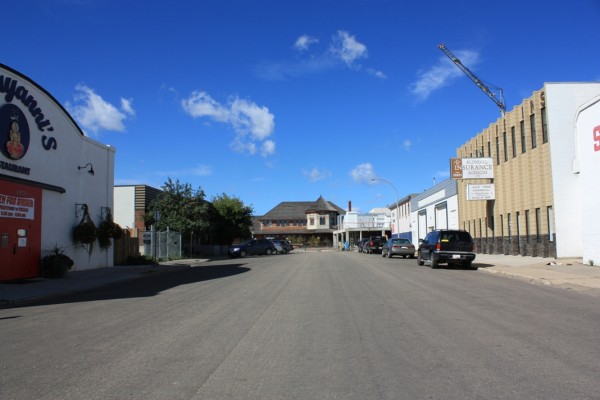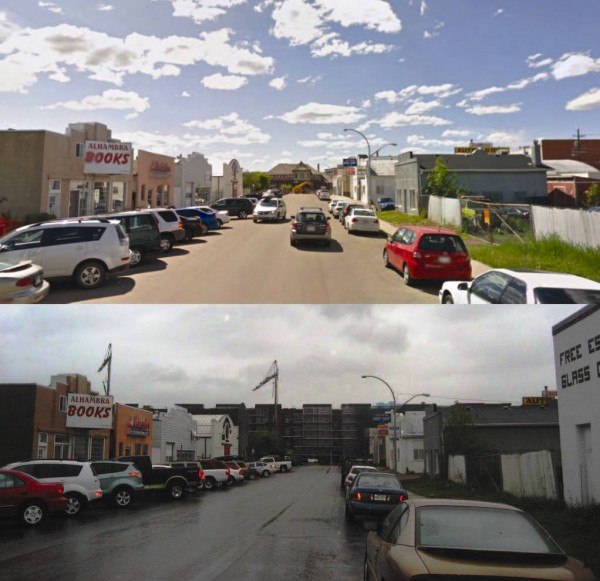Editor’s note: This post was written by Shirley Lowe who is passionate about telling the stories of Edmonton and how the city evolved and grew. Lowe has been named Edmonton’s second-ever Historian Laureate, appointed by City Council to a two-year term.
We lost the vista. It was there for more than 100 years and now it’s gone. We tried to save it but our efforts were too little, too late. We didn’t anticipate the loss and didn’t work to protect the view early enough to make a difference. The plan for the area did not include an inventory of its important views so we were caught unaware. The developer couldn’t or wouldn’t change the plan to leave a public view of a historic site.
Since 1908, the front and best view of the Canadian Pacific Railway station on Gateway Boulevard could be seen by anyone who stood, walked or drove on 81 Avenue, east of the railways tracks. This station replaced the original 1891 Calgary and Edmonton Railway station and was considered important enough that two senior governments got involved in its preservation. The 1908 station was one of only four such designs in Alberta but as of this spring, a four storey wall of apartments covers its face from public view.
This was not the first time that some important heritage or natural vista was covered or lost to the community. Typically, a community is not given the design considerations that we would give a room in our home. From watching HGTV, we all know that a room needs a focal point, furniture with size and design context and good connection to the other rooms in our home. We would never consider the random placement of doors, windows, fireplaces or even furniture without considering how they affect the finished room and we would not leave those decisions to family or roommates, especially temporary roommates, without consultation with experts and each other.
Context and identity are things we understand and usually demand in everything except the community and city where we live. People are attracted to a place because it has design elements that evoke a positive emotional response. In fact, every place evokes an emotional response. We have all been in a building or on a street that makes us uncomfortable, a place we cannot wait to leave. Conversely, we have favourite places where we go because they bring us joy and renew our energy. A successful “place” is more than a set of iconic buildings. It is how buildings connect to each other and to the public street, how they frame views and most importantly, how they connect with people. A building is part of a “place” and it should enhance not overwhelm its community.
Heritage buildings are important because they were built at a time when these connections were the norm. They carry design elements that have stood the test of time. For many of us, they represent stability and permanence, a place we can depend upon, a place where we can make and safely store our memories.
There are larger and longer discussions needed before we resolve how we can ensure that those elements that attract us and make our community a special place can be saved and shared rather than covered or destroyed. Firstly, we have to ask ourselves; how important are special heritage elements to the future of a community?; what are the elements that make our communities livable and bring us joy?; is the presumption that individual property owners work in the best interests of the community a dated premise with the rise of condos and because developers of condos have no long term commitments?; who really “owns” a community?; what are the important processes in community development?



2 comments
This loss is a real shame.
Well put! It’s interesting though, now that I am working in NZ, the planning here is effects based. As frustrating as that is (and coming from Canada, it can be!) these issues are often dealt with. Instead of a checklist of black and white rules for development, it’s all about the effects that this development will have on that, etc.